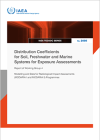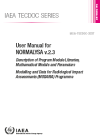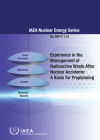Nuclear industries must carefully monitor and control what they release into the environment to keep the air, water and land clean. The IAEA’s Safety Standards provide for rigorous regulatory mechanisms in Member States to restrict the release of radionuclides and control any radiological impact on people and the environment.
Environmental release
Radionuclides can be discharged into the environment when nuclear techniques are used in medicine and science; during the operation of nuclear facilities; and when uranium, metal ores, fossil fuels or phosphates are mined or processed. It is of key importance to limit the release of radioactivity into the environment and to ensure compliance with established radiation protection standards.
In recent years the awareness has grown that the environment is vulnerable and needs to be protected against the effects of industrial pollutants, including radioactive ones. As a result, the historical anthropocentric approach to radiation protection, which assumed that the protection of human beings automatically also covered other species, has ceded to a more ecological methodology, considering explicitly the exposures of flora and fauna to radioactivity and the potential impact to natural resources.
New and developing international policies and legal instruments reflect this change, as do the IAEA Safety Standards, which have set additional goals for environmental protection. These have led to a review of the current approach for assessing and controlling the impact of radionuclides. In particular, the IAEA has taken up the explicit consideration of possible impacts on non-human species in its newest guidance material, in line with the recommendations developed by the International Commission on Radiological Protection and consistent with the work undertaken by the Agency’s Member States active in this field.
Protecting people and the environment if contamination has occurred
People might be exposed to increased levels of radiation if a radioactive release or an accident results in contamination of the environment. In such situations, remedial actions may need to be applied to mitigate radiological consequences, including restricting access to certain areas, cleaning up soils and surfaces and finding alternatives for agricultural production. These efforts might need to be made to reduce the radiation to dose levels that are as low as reasonably achievable, taking into account social, and economic and environmental factors.
The IAEA Safety Standards define criteria and procedures to ensure the public and the environment is protected during the normal operation of facilities. They also cover accidents and the remediation of areas affected by accidents or contaminated as a result of past unregulated practices. The Agency also disseminates practical guidance on the implementation of these Standards, and, when Member States request it, organizes international assistance to support remediation activities.
Remediation of contaminated areas requires the involvement of all relevant authorities and a constructive dialogue with the population. Large nuclear accidents, such as those that occurred in Chernobyl and Fukushima, could require the involvement of several countries, as well as that of their national governments and of international organizations.








